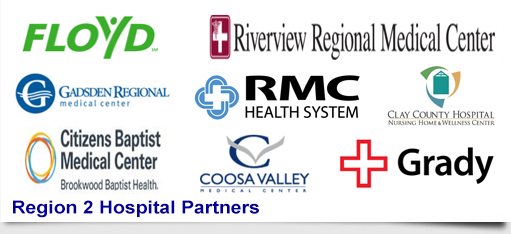|
No Events Were Found.
|


|
|
CDC updates guidance for clinicians treating patients at risk for severe Monkeypox disease
Alabama Department of Public Health (ADPH)
Alabama Emergency Response Technology (ALERT)
Health Alert Network (HAN)
November 21, 2022
CDC updates guidance for clinicians treating patients at risk for severe Monkeypox disease.
Recently, the Centers for Disease Control and Prevention (CDC) released a document titled “Update on Managing Monkeypox in Patients Receiving Therapeutics” (https://emergency.cdc.gov/han/2022/han00481.asp). This publication highlights the importance of recognizing the possibility of tecovirimat (TPOXX) resistance in individuals with severe manifestations of monkeypox disease and prolonged administration of the drug, particularly in those with compromised immune systems. Patients with severe immunocompromise may require longer courses of tecovirimat, as well as additional therapies, until their immune systems can effectively clear the virus. Tecovirimat can be extended on a day-by-day basis beyond its standard 14-day course based on clinical course and should be considered the first-line therapy.
In addition to tecovirimat, other therapeutics including cidofovir, brincidofovir, and vaccinia immune globulin intravenous (VIGIV) can be administered concurrently with tecovirimat for certain patients with (or at high risk for) severe monkeypox. Providers are encouraged to consider the use of two or more therapeutics in patients who have severe monkeypox or certain patients who are at high risk for progression to severe disease.
Cidofovir is commercially available; intravenous tecovirimat, brincidofovir, and VIGIV are only available via CDC or FDA approval for release from the Strategic National Stockpile (SNS). For any patients who may benefit from multiple therapeutics, consultation with CDC as well as infectious disease specialists and other experts is encouraged. For CDC consultation, contact the CDC Emergency Operations Center (EOC) at 770-488-7100.
Clinicians who would like to treat their patients with brincidofovir should submit an e-IND request to FDA by email (DDI.EIND@fda.hhs.gov) or call (301-796-3400 or 1-855-543-3784) during normal business hours (8:00 am-4:30 pm ET Mondays-Fridays). After hours, call the FDA Emergency Coordinator at 1-866-300-4374 or 301-796-8240, or email CDER-EIND@fda.hhs.gov, and call the CDER Emergency Coordinator at 301-796-9900.
Concurrent with tecovirimat therapy, for immunocompromised patients, providers should make efforts to facilitate competent native immunity (e.g., ensure persons with HIV are receiving effective antiretroviral therapy) and limit the use of immunocompromising therapies (e.g., chemotherapy, TNF inhibitors), if feasible. Restoring immune function is an important strategy to minimize morbidity and mortality associated with monkeypox and may decrease the duration of tecovirimat therapy for these patients.
Treating providers should consider testing lesion swab specimens for tecovirimat resistance (F13L sequencing) and plasma pharmacokinetic sample collection for any patient who, after completing 14 days of tecovirimat treatment, experiences persistent or newly emergent monkeypox lesions. Ideally, both resistance testing and pharmacokinetic testing should be performed to determine if any cases of confirmed resistance are associated with drug levels below target concentrations. CDC provides detailed instructions for collecting and submitting specimens for resistance testing and pharmacokinetic testing. Pharmacokinetic testing is performed by a designated lab, not at CDC.
As in the past, CDC encourages diagnostic testing for monkeypox, HIV, and other sexually transmitted infections in every sexually active person for whom monkeypox is suspected and that vaccination with JYNNEOS remains an important tool to prevent monkeypox in at-risk patients.
Finally, providers are encouraged to contact their local health departments and/or the Alabama Department of Public Health early for guidance and to secure necessary resources for treatment when there is concern for progression to severe manifestations or when severe manifestations are present.
For more information see the full CDC HAN here:
https://emergency.cdc.gov/han/2022/han00481.asp
CDC clinical guidance for health care providers:
https://www.cdc.gov/poxvirus/monkeypox/clinicians/index.html
|
|




